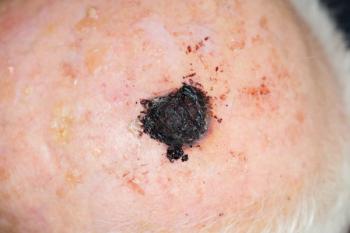
TNF-Alpha Linked to CSU Severity
Key Takeaways
- CSU involves complex immunological mechanisms, including mast cell activation and autoimmune processes, with TNF-alpha playing a significant role in inflammation.
- Elevated TNF-alpha levels in CSU patients correlate with disease severity, suggesting its involvement in systemic inflammatory responses.
Research reveals a significant link between TNF-alpha serum levels and the severity of chronic spontaneous urticaria, suggesting new therapeutic avenues for treatment.
Chronic spontaneous urticaria (CSU) affects individuals across all demographics, presenting a substantial burden on quality of life due to its chronic nature, recurrent flares, and treatment challenges. Despite being a non-life-threatening disease, its unpredictable course and resistance to conventional antihistamine therapy in some patients necessitate ongoing research into its pathogenesis and management.1
Background
The underlying pathophysiology of CSU involves complex immunological mechanisms, prominently featuring mast cell activation and the subsequent release of histamine and other mediators. However, increasing evidence points toward autoimmune mechanisms, including the presence of IgG autoantibodies against IgE or the high-affinity IgE receptor (FcεRI), playing a role in subsets of CSU patients. More recently, attention has shifted toward the involvement of proinflammatory cytokines, particularly tumor necrosis factor-alpha (TNF-alpha), a key regulator of systemic inflammation.1
TNF-alpha is known to drive inflammatory responses through various pathways: promoting endothelial adhesion molecule expression, enhancing leukocyte migration, and stimulating mast cell degranulation. In CSU, these actions may potentiate both the acute wheal response and the late-phase inflammation characteristic of severe and prolonged cases. Several studies have examined serum TNF-alpha levels in CSU patients, with findings suggesting elevated levels relative to healthy controls, and correlations between TNF-alpha concentrations and disease severity.2
Methods
A recent case-control study conducted in Vietnam sought to further elucidate this relationship by measuring serum TNF-alpha levels in 60 CSU patients compared to 30 age- and sex-matched healthy controls.3 Patients were stratified into mild, moderate, and severe categories using the Urticaria Activity Score over 7 days (UAS7), a validated tool assessing wheal count and pruritus intensity. TNF-alpha levels were quantified via enzyme-linked immunosorbent assay (ELISA), and correlations were drawn with both weekly UAS and daily pruritus scores.
Results
The results demonstrated a statistically significant elevation in TNF-alpha concentrations in CSU patients compared to controls (p = 0.0002). Furthermore, TNF-alpha levels increased progressively with disease severity, showing a moderate positive correlation with UAS7 and with pruritus severity on the day of testing. However, no significant correlation was observed between TNF-alpha levels and wheal scores on the blood sampling day, potentially due to the short-lived nature of immediate wheals and the delayed kinetics of TNF-alpha-mediated inflammatory responses.
The study also draws connections to broader immunologic processes in CSU, noting the cytokine’s role in leukocyte recruitment and endothelial activation. Supporting literature indicates that TNF-alpha may indirectly reflect systemic inflammatory cell activation, as suggested by correlations with elevated white blood cell and neutrophil counts in CSU patients. This aligns with a broader view of CSU as not merely a mast cell-mediated condition but one that engages a more systemic inflammatory cascade.
Therapeutically, these findings raise interest in targeting TNF-alpha as a treatment strategy. While antihistamines remain the first-line therapy, a subset of CSU patients—especially those with severe or refractory disease—may benefit from systemic immunomodulation. Preliminary studies on TNF-alpha inhibitors such as adalimumab and etanercept have reported symptomatic improvement in patients unresponsive to both high-dose antihistamines and omalizumab, an anti-IgE monoclonal antibody. Though not currently standard of care, TNF-alpha inhibitors may offer a novel therapeutic avenue for difficult-to-treat CSU cases.
However, the study acknowledges important limitations, including a relatively small sample size and a single-center design, which may limit the generalizability of its findings. Additionally, as TNF-alpha is involved in numerous inflammatory conditions, its specificity as a CSU biomarker requires further investigation.
Conclusion
Overall, the study found elevated serum TNF-alpha levels in CSU patients—particularly those with more severe symptoms—highlight a potential role for this cytokine in disease pathogenesis and activity monitoring. These findings support the broader hypothesis that CSU involves systemic inflammatory mechanisms and may pave the way for biomarker-driven, targeted therapy in select patient populations. Further multicentric studies with larger cohorts are warranted to validate TNF-alpha as a diagnostic or prognostic tool in CSU and to clarify its utility in guiding personalized treatment strategies.
References
- Kanani A, Betschel SD, Warrington R. Urticaria and angioedema. Allergy Asthma Clin Immunol. 2018;14(Suppl 2):59. Published 2018 Sep 12. doi:10.1186/s13223-018-0288-z
- Hermes B, Prochazka AK, Haas N, Jurgovsky K, Sticherling M, Henz BM. Upregulation of TNF-alpha and IL-3 expression in lesional and uninvolved skin in different types of urticaria. J Allergy Clin Immunol. 1999;103(2 Pt 1):307-314. doi:10.1016/s0091-6749(99)70506-3
- Le TVT, Mach KH, Vuong TBT, Tran TT. Chronic spontaneous urticaria severity relating to TNF-alpha serum concentration. Dermatol Res Pract. 2025;2025:8853778. Published 2025 Apr 19. doi:10.1155/drp/8853778
Newsletter
Like what you’re reading? Subscribe to Dermatology Times for weekly updates on therapies, innovations, and real-world practice tips.


















